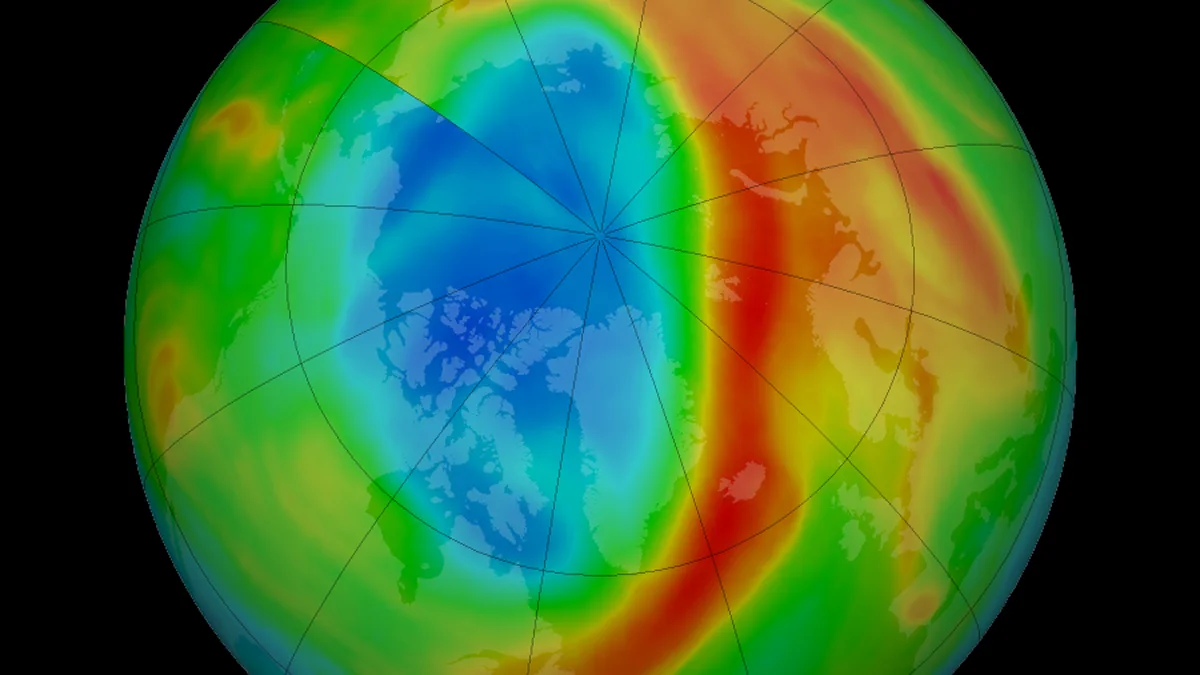
Rare Arctic ozone hole stretches from Hudson Bay to Siberia
Rainbow-hued clouds spotted over the Arctic have resulted in a rare ozone hole over the region
Throughout the month of March, so far, NASA satellites have been tracking a large hole in the Arctic ozone layer that appears to be the largest and most intense one ever seen.
The ozone hole over the Antarctic is a yearly event, typically opening up in August and sealing up by November, as a reminder of the impacts of human activities on the environment.
Carried by wind patterns, chemicals known as chlorofluorocarbons collect in the frigid winter stratosphere, some 15-25 kilometres above the surface. During the dark winter months over the south pole, temperatures at that altitude plunge to -78°C or lower, causing the CFCs to join together with the scarce amount of water found there, to form rainbow-hued 'nacreous' clouds - aka polar stratospheric clouds. When sunlight finally strikes these clouds, as the darkness retreats, they act as focal points for chemical reactions that destroy ozone.
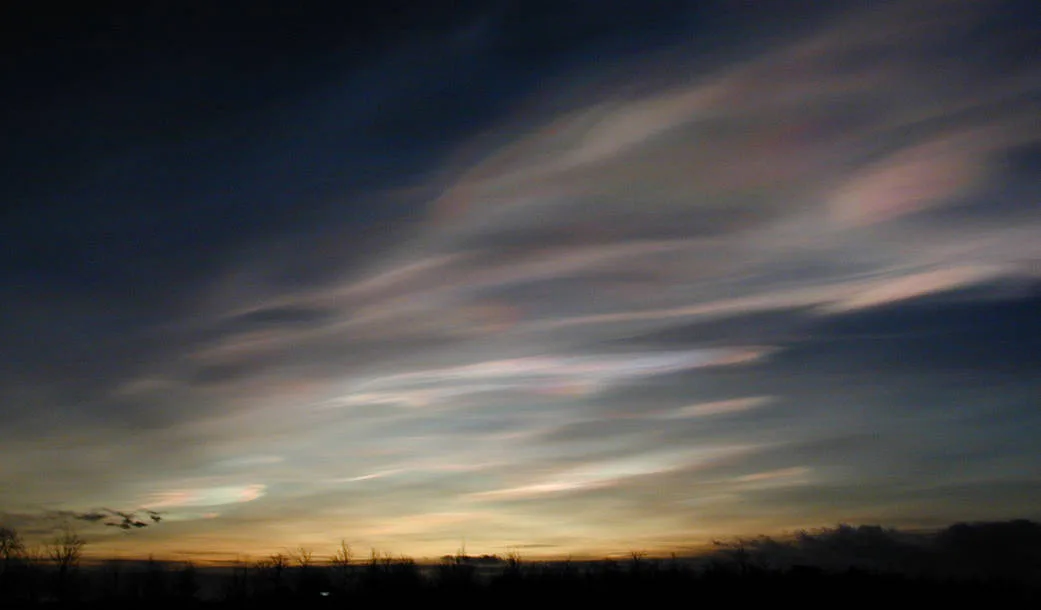
Nacreous or polar stratospheric clouds observed near Kiruna, Sweden. Credit: NASA/Lamont Poole
While these processes happen over the Antarctic almost like clockwork every year, rarely, a similar - albiet smaller and less intense - hole can open up in the ozone layer across the Arctic.
Some Arctic ozone holes could be thought of simply as 'gaps' rather than a true hole. Due to weather patterns swirling around the north pole, stratospheric ozone 'piles up' over some regions, and as a result, it thins out in other regions.
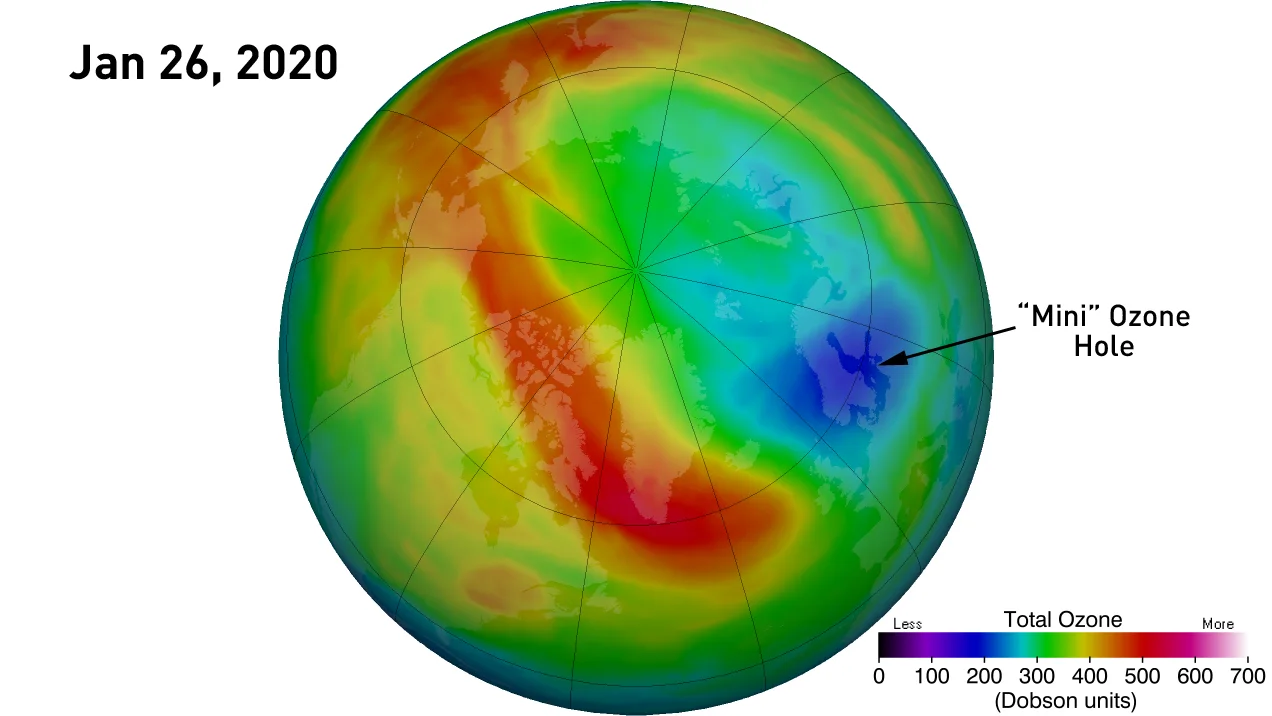
A gap in the Arctic ozone layer opened up in late January, due to ozone 'piling up' over other regions. Credit: NASA Ozone Watch/Scott Sutherland
These are often small - such that they are often called 'mini' ozone holes - and they do not last very long, due to the wind patterns eventually smoothing out these differences.
Now, however, a true ozone hole, produced by sunlight falling on nacreous clouds, has opened up over the Arctic, and it is quite wide.
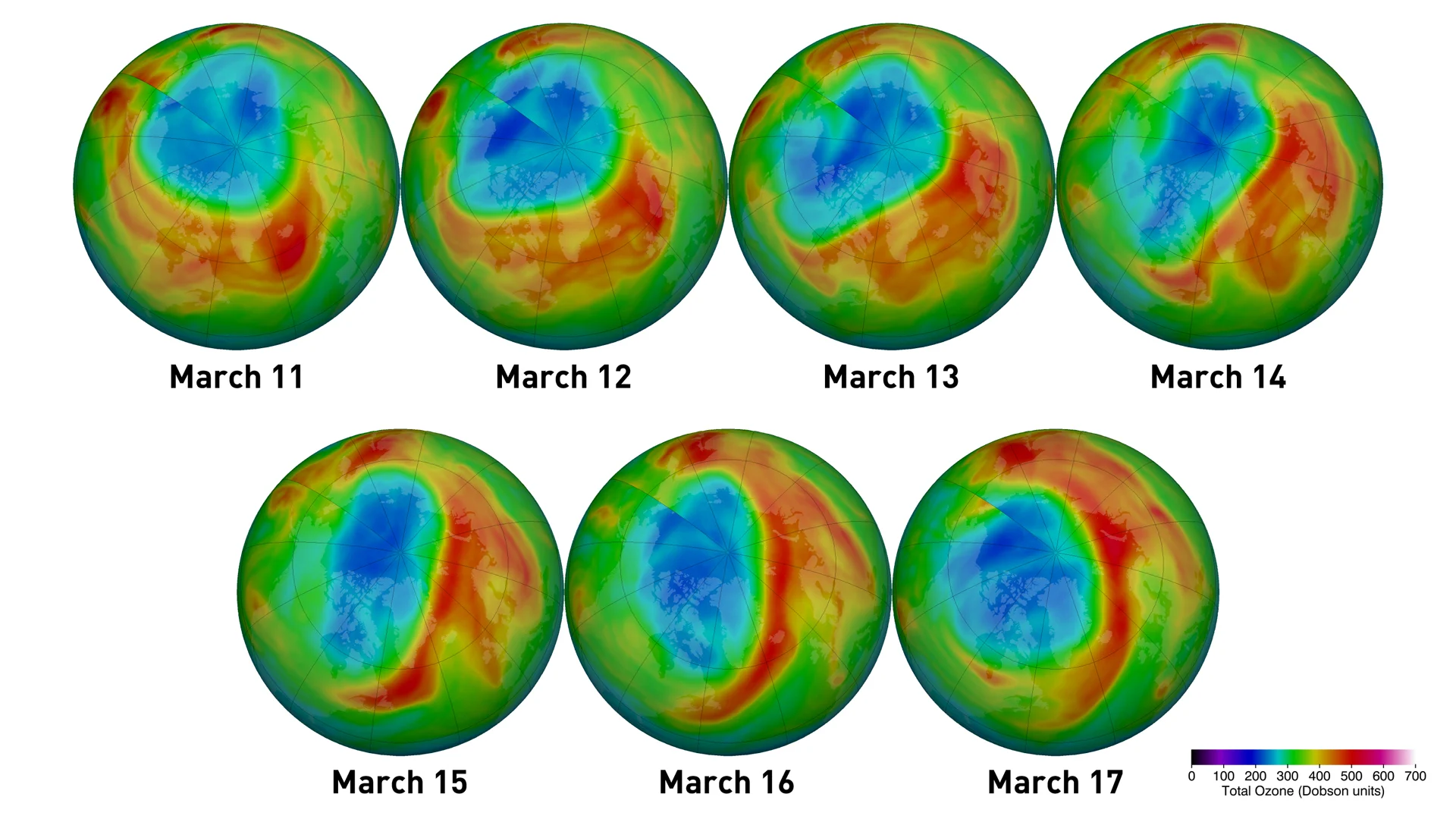
The Arctic ozone hole, from March 11-17, 2020. Sharp discontinuities in the data are due to the timing of the satellite passes over the north pole. Credit: NASA Ozone Watch/Scott Sutherland
According to Severe Weather Europe, who performed their own analysis earlier this week, this is likely a record-setting Arctic ozone hole. While there were ozone holes that had opened up before, notably in 2011 and 1997, they just don't measure up against what we are seeing now.

Arctic ozone holes from March 14, in 2020, 2011 and 1997. Credit: NASA Ozone Watch/Severe Weather Europe
As they wrote on their website: "Comparing the March 14th data ozone analysis for 2020, 2011 and 1997, we can see that all three years have an ozone hole present. But, 1997 and 2011 were not as intense as this year, which will likely make this March ozone hole a record strong one, for many decades in the past and perhaps also into the future."
What was different this year is stratospheric temperatures over the Arctic. According to the temperatures plotted by NASA, the Arctic stratosphere typically warms up to above -78°C by mid-February. This prevents nacreous clouds from forming, and thus when the sunlight finally shines on that part of the world again, there is little to no ozone destruction.
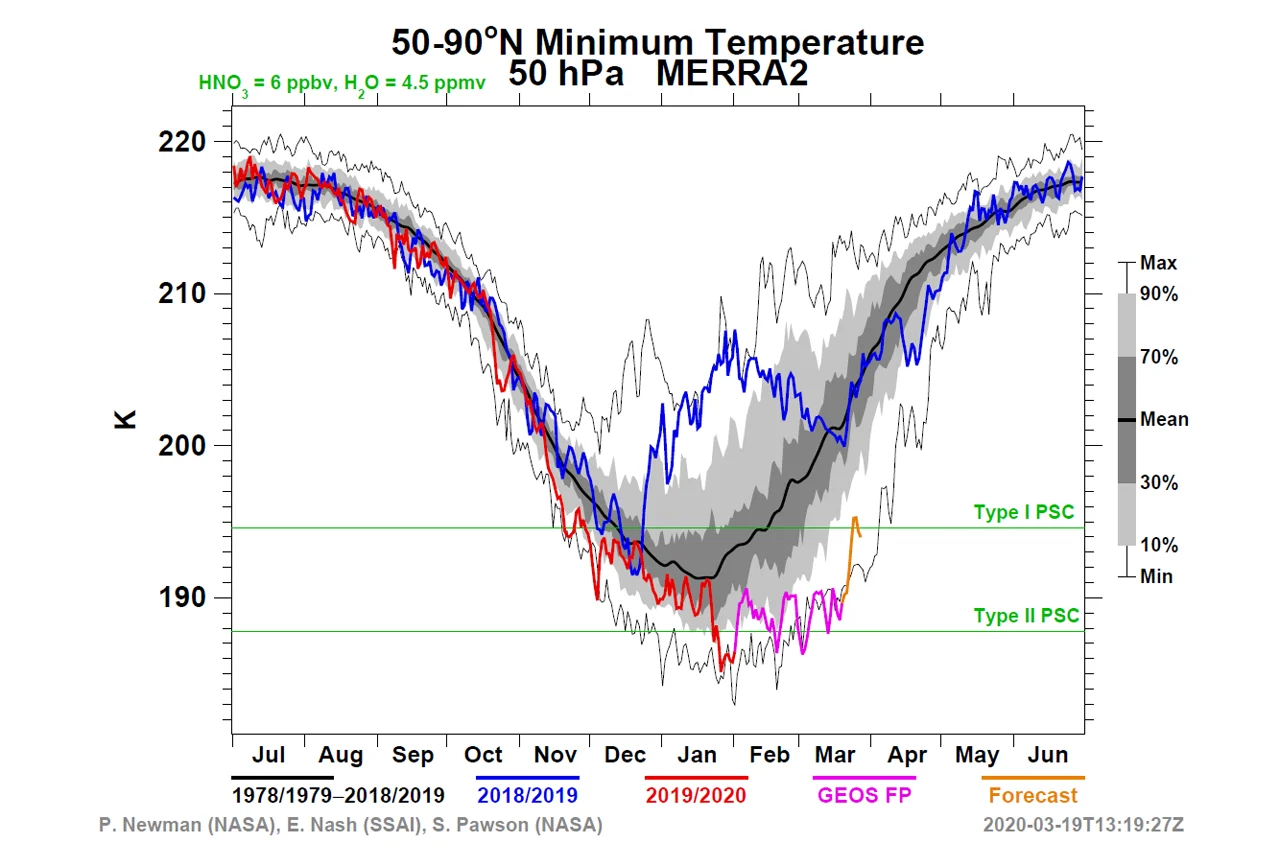
Graph of temperatures across the Arctic, plotted in Kelvins. 273 Kelvins is equivalent to zero degrees Celcius. The green lines indicate -78°C and -85°C which are the threshold temperatures for the formation of Type 1 PSC and Type 2 PSC, respectively). Credit: NASA
Even just one year ago (the blue line in the graph) temperatures stayed well above the threshold for polar stratospheric clouds, except during a brief period in December. For 2019-2020, however (the multi-coloured line), temperatures dropped below the threshold in late November, and they have stayed there since.
As the forecast shows (the dark yellow portion of the multi-coloured line), temperatures are expected to climb in the days to come, due to the increase in the amount of sunlight received. As it warms up, the nacreous clouds will diminish, and there will be less ozone destruction, which will lead to the ozone hole sealing itself fairly quickly.
Stay tuned for updates.
Sources: Severe Weather Europe | NASA Ozone Watch
